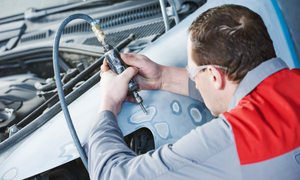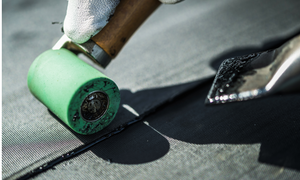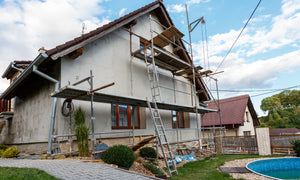Hot-Air Tool Troubleshooting: Power Supply

If your hot-air tool is not reaching the proper temperature, taking longer to heat up, performing inconsistently, or not functioning at all, the first thing you should check is that your power source consistently produces enough current to meet the voltage requirements of the tool.
Following is a quick guide to understand your power needs, purchase a voltage tester, test your power supply, and fix power issues.
Determine Power Needs
The first thing to do is find the voltage required by your hot-air tool. This can typically be found on the tool's label or within the owner’s manual.
As you test the power source, this will be the minimum voltage required for optimal performance. Anything less, and the tool's performance will suffer.
Purchase a Voltage Tester
To test your power supply, you’ll need a voltage tester. These lightweight, handheld devices range in price from $10 to a couple hundred dollars, and can be purchased at most hardware stores, including Lowe’s, Home Depot or Sears. When selecting a voltage tester, keep the following requirements in mind:
- Registers Alternating Current (AC)—The voltage tester should register AC, as this is what powers most homes and businesses. If it registers both AC and DC, make sure you use the AC setting.
- Probes Not Clamps—Purchase a voltage tester with probes (pictured above), instead of the type with clamps (seen here). The probes are better for testing power outlets; clamps are designed for testing power flowing through a wire.
Test Voltage
Measuring AC voltage with a voltage meter is easy. Follow these simple steps:
- Insert the red probe into the "VΩ" jack or receptacle (see item No. 3 below).
- Insert the black probe into the "COM" jack or receptacle (see item No. 2 below).
- Now "AC~" voltage or "DC ═" voltage can be measured (see item No. 1 below).
Please Note: When testing power, wear insulated gloves to protect against electrical shock. Also avoid performing this test around standing water or in the rain.
If the output shown on the voltage tester is less than what is required by the hot-air tool, too little power will be supplied to the heating element, which in turn will not get hot enough to produce the required heat output.
How to Resolve Power Issues
Generators
If your generator is producing weak power output, you’ll need to contact your distributor or the manufacturer to troubleshoot the issues and determine what fixes, if any, can be made.
House Power (wall outlets)
If you’re using house power, you have several options:
- Invest in a generator that can produce the power needed. This is recommended for professionals who work at multiple locations and often need to tap into house power, which can sometimes vary in capacity and consistency (for example, low voltage conditions such as 208 VAC, fluctuating and spiking voltage conditions, etc.).
- Purchase a buck-boost transformer, which can be plugged into an outlet and automatically make small adjustments to alternating current to help maintain a consistent power output.
- Contact a certified electrician to examine the electrical system. A professional may be able to safely boost power output.
If the Power Source Checks Out
If your voltage tester indicates the proper output, but you are still having trouble with your performance, the problem may be a part malfunction. Contact IHS for support.
- Robert Heater







